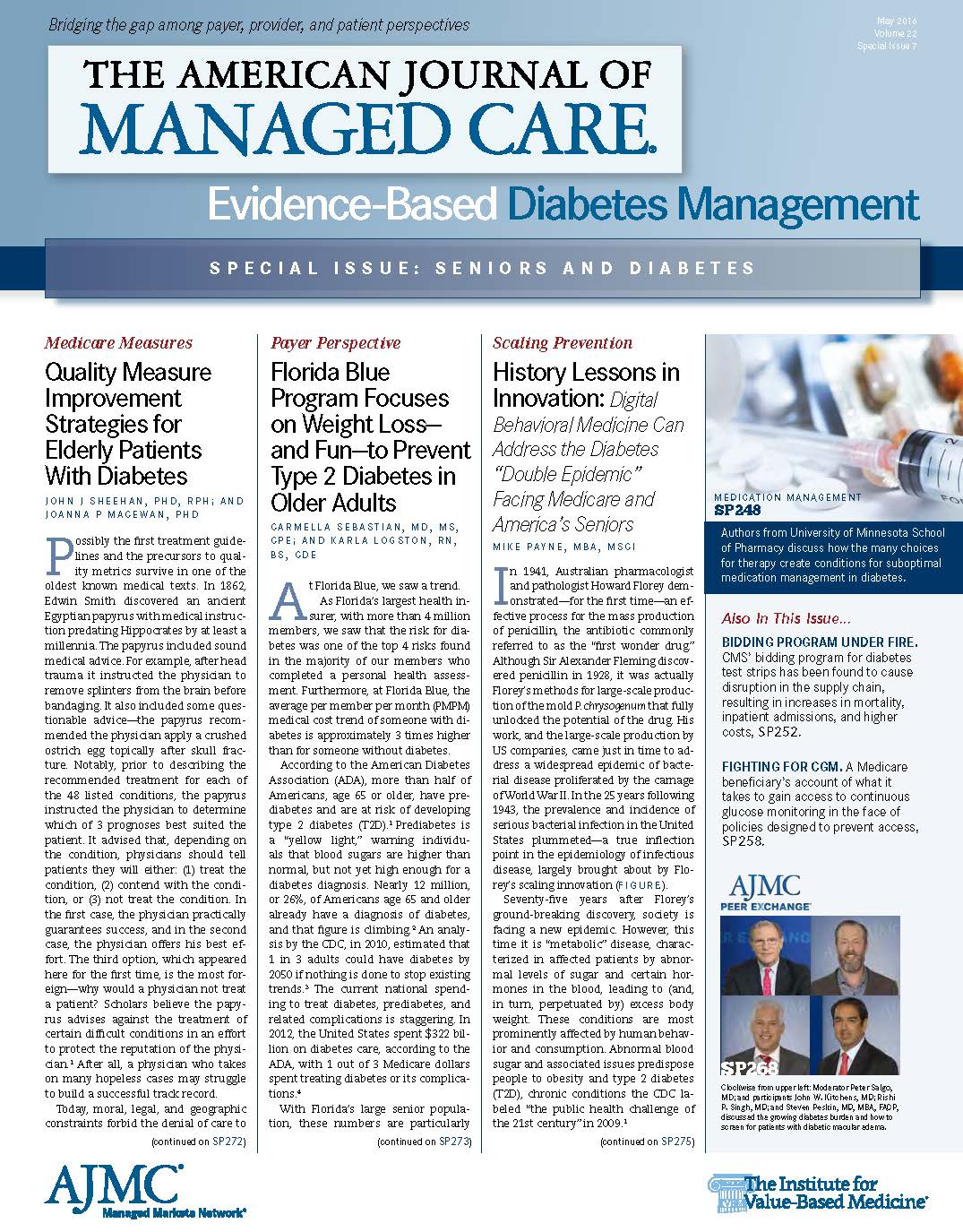- Center on Health Equity & Access
- Clinical
- Health Care Cost
- Health Care Delivery
- Insurance
- Policy
- Technology
- Value-Based Care
Seniors Without CGM Access Report More Trips to the ED, Survey Finds
The study highlights results from the population largely denied CGM coverage under Medicare.
In recent years, the JDRF (formerly the Juvenile Diabetes Research Foundation) has cited a 2011 study in The American Journal of Managed Care while making the case that Medicare beneficiaries should have access to continuous glucose monitoring (CGM): the study found that the average cost of an inpatient admission for hypoglycemia in 2008 was $17,564 and the average cost of an emergency department (ED) visit was $1387.1,2
Now, a new survey that comparing insulin-dependent diabetic adults age 65 or older with and without access to CGM finds that having access makes a patient less likely to experience a hypoglycemic event and less likely to end up at the ED. Those with CGM access also report better quality of life.3 Study authors were William H. Polonsky, PhD, CDE, of the University of California San Diego; Anne L. Peters, MD, of the University of Southern California; and Danielle Hessler, PhD, of the University of California San Francisco. Dexcom funded the study.
Although the study’s authors acknowledge that the 2 groups were not entirely balanced—those with CGM had higher levels of education and income—these implications are noteworthy: they suggest that wealthier Medicare beneficiaries who can pay for CGM on their own will continue to have access after they retire, while poorer beneficiaries will do without, absent a policy change from CMS. Noting that even those using CGM face a higher risk of hypoglycemic events as they age, the authors wrote: “Given the potential vulnerability of this older population and the resulting costs associated with these events, it is unfortunate that [CGM] is not, at this time, covered as a benefit under Medicare, thereby often making it all but unaffordable to those in the elderly population at lower or fixed income levels.”
Researchers evaluated survey results from 296 adults age 65 or older who either had type 1 diabetes (T1D) or were using insulin to treat type 2 diabetes. The mean age of the respondents was 70.7 years and 48.1% were female. Of the group, 210 were using CGM, 75 hoped to obtain CGM access, and 11 had previously used CGM. The last group was too small to be separately analyzed.
INCOME AND EDUCATION. Those using CGM were less likely to have low incomes: only 14.4% made less than $50,000/year compared with 42.7% of the group who desired CGM but did not have access. The group using CGM also had more education: only 26.7% had not completed college compared with 45.3% of the group hoping to gain CGM access.
PATIENT-REPORTED HEALTH RESULTS . Those hoping for CGM access were more likely to report at least 1 moderate hypoglycemic episode in the past 6 months than those who were using CGM (90.7% vs 78.1%). Those without access also reported more ED visits for hypoglycemia during the previous 6 months (18.7% vs 6.7%). The group hoping for CGM was also more likely to report an incident in the previous 6 months that required another person’s help (80.0% vs 57.6%), which the authors found important since the chances of living alone increase with age.
References
1. Quilliam BJ, Simeone JC, Ozbay B, Kogut SJ. The incidence and costs of hypoglycemia in type 2 diabetes. Am J Manag
Care. 2011;17(10):673-680.
2. CGM Medicare coverage. JDRF website. http://jdrf.org/take-action/advocacy/cgm-medicare-coverage/. Accessed
April 30, 2016.
3. Polonsky WH, Peters AL, Hessler D. The impact of real-time continuous glucose monitoring in patients 65 years and
older [published online April 1, 2016]. J Diab Sci Tech. 2016. doi:10.1177/1932296816643542.
4. Grunberger G, Bailey T, Camacho PM, et al; Glucose Monitoring Consensus Conference Writing Committee. Proceedings
from the American Association of Clinical Endocrinologists and the American College of Endocrinology Consensus Conference
on Glucose Monitoring. Endocr Pract. 2015;21(5):522-533. doi:10.4158/EP15653.CS.
5. American Diabetes Association. Standards of medical care in diabetes—2016. Diabetes Care. 2016;39(suppl 1):S1-S112.
QUALITY OF LIFE . Those hoping for CGM access reported poorer overall well-being, greater hypoglycemic fear, and more overall diabetes distress. This was especially true among those with T1D who were not using CGM. In the past year, scientific societies have weighed in on the value of CGM, calling on CMS to change its policy, while legislation that would require coverage has accumulated cosponsors but no action so far (see SP258). In May 2015, the American Association of Clinical Endocrinologists and the American College of Endocrinology called it “imprudent” for payers to deny coverage for high-risk patients with intense insulin regimens.4 The American Diabetes Association called for CGM coverage in Medicare in its 2016 guidelines update, which included a lengthy overhaul of treatment recommendations for seniors.5

Integrated Care for Chronic Conditions: A Randomized Care Management Trial
December 3rd 2025The authors sought to understand the differential impact of payer-led community-based care management approaches on stakeholder-oriented outcomes for publicly insured adults with multiple chronic conditions.
Read More

